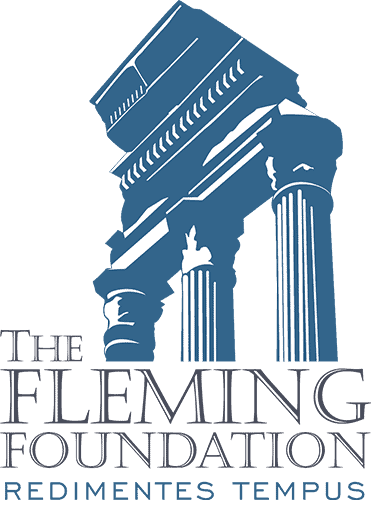Help Wanted
Still in the early stages of planning a Fall Program in Italy, we are seeking advice, opinions, and preferences from readers who are interested in attending.
Our tentative dates are some time in October, partly because it is good weather but off season. The average high and low temperatures in Rome are 72 and 53. But October is also a good month because there are still direct flights from a number of US cities including Chicago.
As we have reported, we have set a theme for 2024, and it is the history and civilization of Italy from the Fall of Rome to the present. The Summer program is taking up the rise and fall of Florence during the Renaissance, and my first thought was to concentrate on Tuscany during the Fall program.
I am having second thoughts, however, but not because Medieval Tuscany is not an exciting period to study, much less because Siena, Florence, Pisa, Lucca, and Arezzo are not wonderful places to visit. On the contrary, Tuscan cities are among the most visited tourist shrines in Italy, and the history, literature, and art of the region remains one of my central interests.
My main concerns are, first, that Italy is a big place and it may be a mistake to concentrate on only one region, and, second, that we have actually done several programs in Tuscany: in 2002, 2009, and 2013.
By contrast we have only had to trips to Po Valley, in 2000 and 2015. Milan, despite the damage suffered in WW II, is a city right in history, pagan and Christian. It takes some experience to know how to enjoy this great city. It is the city of Ambrose and Augustine (whose remains are there), but it also the city that organized the resistance of the Lega Lombarda to the Emperor Friedrich Barbarossa. Nearby are two small cities that were important Lombard centers: Pavia and Monza, and it is a convenient train ride or dive to Bergamo, Como, Parma, and Verona.
We cannot possibly do all those cities in one trip, but as I thought about it, a theme took shape in my mind: the dream of Italian unity, first conceived of by the Lombards, who ruled from Pavia and later defended by the Lega Lombarda. It was the dream by the most influential Italian writer since Dante, Alessandro Manzoni, who came from Lecco on the east end of Lake Como. The region from Lecco to Milan is the setting of what I regard as the best novel ever published, I Promessi Sposi. Manzoni’s other most important work is a play about the last Lombard king, but he was also the poet who composed an ode on the French Revolution and Italian unity.
The central region of Manzoni, from Lecco to Como, is called the Brianza, the home of one of Italy’s finest Christian writers, my friend Eugenio Corti, who was kind enough to speak at our first program in Italy.
So a program that includes, at a minimum, Milan, Bergamo, Como, and probably Pavia or Monza, would be an ideal setting to read or reread two of the greatest works of Italian fiction.
Whichever we decide, we could do the other program in a year or two, perhaps with a program in Greece or France in between. In any event, we want to hear from any reader who is interested in joining us.
Please respond, at any length you like, to the following questions:
1. How likely are you to take part in an Italian program in the Fall of 2024?
2. Which of the two programs most interests you: Toscana or Lombardia?
3. If it works out that we do not do the program that most interests you, would you still like to attend the other program?




Do you want responses here in the comment section or email?
Whichever you prefer, though it would be more helpful here, where others may be stimulated to comment. I hear through the family grapevine that you had a good time with the Chef.
I am interested in attending a Fall Symposium in Italy. I have never been there, so either program is appealing. Based on the little I know, I think the Toscana trip would be more interesting, but I would go to either program.
One of the nice thing about Fleming tours is that they require no effort or input and those who go on them can be utterly passive and let you do all the work.
I’m sure that what you decide to do would suit me. You have a vast knowledge about Italy.
I will go on the trip regardless unless by some chance it conflicts with some event that I must attend here in the US. That appears unlikely now because it looks like the 2 most dangerous conflicts are heading toward being scheduled for September and November.
All of that said, I would say – mildly and out of my admitted ignorance of Italy – that even though Florence and Tuscany may have been visited more often – if I had to express a preference it would be for Tuscany. I’ve always hoped to see Lake Como but I don’t think October would be a good time to see it. My one brush with Lombardy was on my first trip to Europe in 1972 when I visited Milan for a couple of days. It was not Venice which perhaps had spoiled me but Milan to me had all the charm of Pittsburgh.
As I observed in my post, it requires knowledge, experience, and judgment to appreciate Milan. I used to spend a good deal of time there, when I was following the Lega Lombarda/Lega Nord. There are several magnificent churches, including the Duomo, Sant’ Ambrogio, San Maurizio, and Santa Maria delle Grazie. The Galleria is perhaps the most famous shopping area in Europe; La Scala is the home of Italian opera….. The Pinacoteca Brera is one of the great art museums of the world, and its concentration on North Italian art makes it a revelation to people who only know Tuscan painting. And, because Milan was so wealthy and powerful, great Venetian painters like the Bellinis, Mantegna, and Tintoretto, and Tuscans (Paolo della Francesca, Raffaello, as well as obscure Milanese painters like Caravaggio.
Yes, the first few times one visits Milan without a guide, it can be daunting, but then I’ve done the preparation. We spent two or three days there with part of the group that came with us to Verona, Venice, and Ravenna, and they will tell you what a good time they had.
I’ve spent perhaps more time in Como, and though I am everywhere underwhelmed by beautiful villas on a scenic lake shore, the town and the lake are both lovely, as are the rolling hills of the Brianza. The standard tourist take on Como is that October is one of the best times to visit. Cool but not cold, magnificent foliage, lovely boatrides on the lake. Ladies who like to shop will love Milan and Como, and in the latter there is a magnificent shop on the outskirts where the best silk garments can be had at discount prices. Sam’s wardrobe could use some spiffing up!
Parma, where we stopped with a group about ten years ago–with Mr. Dickson, as I recall–has several lovely churches, and a school of painting that includes Correggio and Parmigianino, and–along with not too distant Bologna–the best pasta in the world. (There is a reason why the cheese and ham of Parma are world-famous.)
My wife thinks we ought to include Bologna, where we have spent time on several occasions. Our daughter, while she was spending a term in Siena, visited Bologna and observed it is the color of Mortadella. Bologna is one of the finest cities in Italy and perhaps home to the best cuisine. For reasons inexplicable to me and to Bolognese hotelkeepers, mass tourists overwhelm Florence but leave Bologna alone.
I don’t know anyone who has visited Bergamo who did not fall in love with the place, and it is the home of one of the greatest Italian portrait painters, Moroni. Eugenio Corti took me to visit an army pal, who turned out to be the direct descendant of the painter, and he showed me his house filled with his ancestor’s works as well as paintings by his friends. The house is now a museum, not too far from the beautiful Accademia, second only to the Brera for North Italian art.
Of course there are so many lovely towns–Cremona, Piacenza, Mantova, Verona–we could not possibly visit more than a few of them. The trick is to have variety–a big city plus smaller more intimate places. Hilltop towns like Bergamo, and towns in the plain like Mantova.
Just to be clear: I am not making a case for Lombardia against Toscana. They are equally wonderful, and, if my mental and physical condition remains sound, I intend to do both. All I need to do is to decide in which order.
With Toscana the main difficulty will be avoiding the crowds, particularly in Florence, but I am looking for hotels either in the Oltrarno near San Freddiano–a quiet neighborhood near beautiful churches–or even up the hill to Fiesole. We often stay near the train station, and, while the Via Nazionale is always crowded during the day, it is a good location, around the corner from the Mercato Centrale, a short walk to the Duomo and Baptistery, and surrounded by some of my favorite simple restaurants–Cafaggi, Antellesi, and of course the tourist-ridden Mario’s which still has excellent food.
The Uffizi has always been crowded, and mass tourism has made it worse, but a group booking for the opening time reduces the problem. When we visited San Marco, recently, as we always do when we are in Florence, there was one small group of students and only a handful of other people. And other churches like Santo Spirito were also uncrowded. Perhaps it is for the best but one now has to reserve tickets for the Brancacci chapel with the wonderful paintings of Masaccio.
Of course, if one wants to see everything in Florence of importance, it would take several weeks of determined sight-seeing, and that in my opinion is no fun. In our few days in Florence, we ate well every day, which is more difficult that you might imagine, but the older trattorie are still authentic.
I know Pisa better than I know Rockford, and after spending three weeks there recently, I know we could do 2-3 days fairly effortlessly.
We are considering Arezzo, not only a major Etruscan city but a beautiful place with an amazing central piazza. The famous fresco cycle of Paolo della Francesca is one of the finest bits of painting in Italy. What is nice about Arezzo is that it has remained more of a real city with only moderate tourist traffic, and the tourists one meets tend to be serious lovers of painting and architecture. From Arezzo it is only 45 minutes to Chiusi, a charming Etruscan city (“Lars Porsenna of Clusium, by the Nine Gods he swore…”). Montepulciano would be a bit more difficult but not with a rented bus.
I likely face insurmountable logistics issues that would preclude us from going to Italy. However, if they were, in fact, surmountable somehow, are there any thoughts as to what age would be “too young” to take on such a trip?
I am planning on attending. I was hoping to bring my 14, 17, and 19 yr olds if that is appropriate. They would probably vote to visit Tuscany, as they’ve never been to Italy that they remember. However, I’ll probably get them there independently and, as you say, it can be more readily appreciated by mere mortals, where the northern areas are greatly helped by some experienced guiding. So my vote is the northern towns. Oddly enough I have two ties to the area. My corporate EU headquarters is in Bergamo—I was there for a 24 hr period in Dec19. Other than the exquisite hotel and a great breakfast it was all corporate schmoozing. We even had to take dinner in the airport we were on such a tight schedule. I also have a cousin living in Milan. She and her husband are fairly celebrated opera singers. Obviously, I would be happy to return to Tuscany as well. Unlike Paris, Tuscany is always a good idea.
As you mentioned, I had what I expected to be a rather prosaic meeting out our factory in Mebane, NC. Garrett’s fellowship and hospitality turned it into anything but prosaic. It was a wonderful meal at Bombalo’s the first night. My two travelmates were with me—a Frenchman and a Greek, both Epicureans themselves. They were very impressed with everything, particularly the homemade sausages. They are committed to bringing their Italian boss there on his next visit.
I liked the beef heart tartare the most. We get a cow every year and the organs always go to one of our kids’ homeschool dissection events. Garrett introduced me to the savories of beef heart too late for this year’s butchering, but next year the curriculum will have to settle for dissecting a pig heart. The next afternoon the Chef graced me with some Avos on the restaurant porch which were an infinite improvement over the cheap Alec Bradley’s I’d brought. I was also privileged to meet your daughter Eleanore for the first time. I was very blessed from start to finish. Sorry to take us somewhat off topic to the thread, but I figure good food, cigars, and fellowship are never out of place on this website—best revenge and all. Revenge was well had on both of those days at Chapel Hill.
Someone else asked about how young we would take children. The obvious answer is: It depends on the children and their parents. As a parallel, when I am out on a walk and some disorganized young women approaches, dragged by two snarling mastiffs, she will say something like, “I hope you are not afraid of dogs.” What I think silently is that I have never been afraid of dogs, though dogowners these days terrify me. They have no idea of how to train an animal to keep it under control, and they raise–I use the word advisedly–their little human beasts the same way. I took my two older children when they were 10 and 8, and while they probably got little out of the experience, it did change them in some ways. So long as they are under control and not disruptive, we would accept children of any age, but my recommendation would be 10 or 12. The children who have come to our Summer Schools have been uniformly polite and charming, a positive asset and not a liability. We would try to make it as affordable as we can without losing money and are happy to work with parents.
I am spending an equal amount of time on planning both proposed adventures. My wife is eater to head north, until I reminded her that we could include Chiusi and Arezzo, two great Etruscan towns, in a Tuscan program.